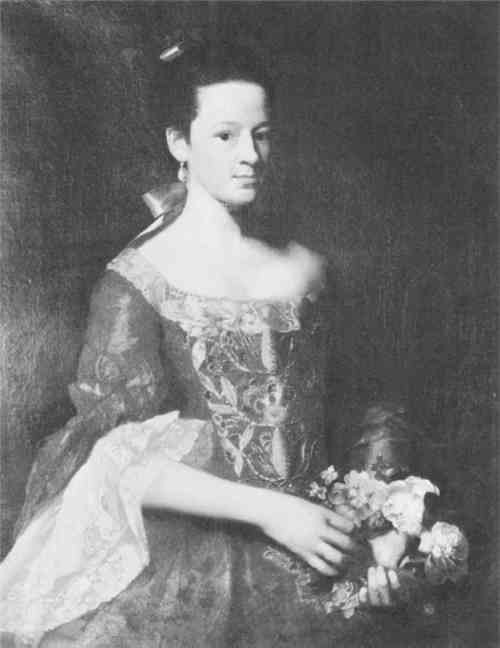JOHN SINGLETON COPLEY'S PORTRAITS: A TECHNICAL STUDY OF THREE REPRESENTATIVE EXAMPLESJ. William Shank
3 EARLY AMERICAN WORKS (ca. 1753–1760)PICTURE PAINTERS IN COLONIAL America were, by and large, dependent upon the Old World as a source of artists' materials. An article11 by P. England and L. van Zelst of the Museum of Fine Arts in Boston investigates the pigments used by artists in seventeenth-century New England, i.e. in the period between fifty and one-hundred years before Copley's time. Their findings indicate that the materials present in colonial American paintings at that time correspond closely to those then in common usage in Europe, from the warmly colored grounds to a variety of colorful, professionally manufactured pigments.12 A 1720 advertisement, cited in the aforementioned article,13 promotes paints from London available for purchase at the dock in Boston. Copley's stepfather, Peter Pelham, and his circle of artist-friends had steady access to art suppliers abroad: connections that were most likely communicated to the young painter. By the time Copley's career in America had begun to flourish, shops for artists' supplies existed in New England itself; a letter written home to Henry Pelham in Boston during Copley's travels in Italy (Parma, 25 June 1775)14 mentions, “… Colours ground in oyl, as you get them from the Colour shop.” 3.1 DOROTHY MURRAY (ca. 1760)The painting from Copley's earliest period chosen for study is a portrait of Dorothy Murray (later Mrs. John Forbes, 1745–1811), now in the collection of the Fogg Art Museum (1929.321). The sitter, daughter of a Boston merchant class family, is presented with her dark hair swept back, her throat encircled by a pearl necklace, and her arms haloed by billows of lace; she stares steadfastly at the viewer in three-quarter profile. A wreath of colorful flowers is held loosely in her hands. Broad expanses of light flesh tones make the solidity of Dorothy's form stand out from the dark brown background, and a single light source casts strong shadows across her flesh. The anatomical uncertainties, most evident in the treatment of the sitter's arms and hands, are typical of Copley's youthful works (Fig. 1).
3.1.1 SUPPORT:The canvas support for the painting, which has been lined at least once (the present lining adhesive appears to be glue or paste) is linen, of plain weave, with about thirteen threads, of very irregular widths, per centimeter. The nature of the canvas is clearly visible in the x-radiograph (and easily distinguished from the lining canvas) because of the presence of a lead-containing ground layer which fills the interstices of the fabric. 3.1.2 GROUND:The whitish ground layer contains both lead white and calcite, in proportions of approximately three-to-one. It is thinly and evenly applied and does not obscure the texture of the support. There is no evidence of an underdrawing. 3.1.3 PAINT LAYER:The painted design is handled directly and simply, with overlapping of layers confined to the depiction of materials which are layered in reality (e.g. the transparent lace sleeve over the flesh of the sitter's arm; and the embroidered decoration of the dress bodice). Some glazing is in evidence in the dark shadows of the dress. The general layout of the paint layer is a side-by-side application of lights and darks which are blended into each other, probably while wet. An obvious effort was made by the twenty-one-year-old artist to disguise the brushwork, and very little impasto is present. BINDING MEDIUM: While no analysis of the painting medium was conducted, the painting appears to be executed in a traditional oil medium. Copley's writings frequently mention both “nut oil” and poppy oil.15 A rare reference to “Linseed Oyl” refers to its use for house-painting.16 PIGMENTS: Pigments found to be present in the portrait of Dorothy Murray include lead white, calcite cinnabar, vermilion, yellow ochre, orpiment, Prussian blue, and charcoal black. Organic red and yellow stains were also observed. (For specifications of pigment analyses and results, please refer to Table 1.) Table 1 DOROTHY MURRAY, Fogg Art Museum, 1929.321 36�″ (h) � 28″ (w); 91 cm (h) � 71 cm (w) |
